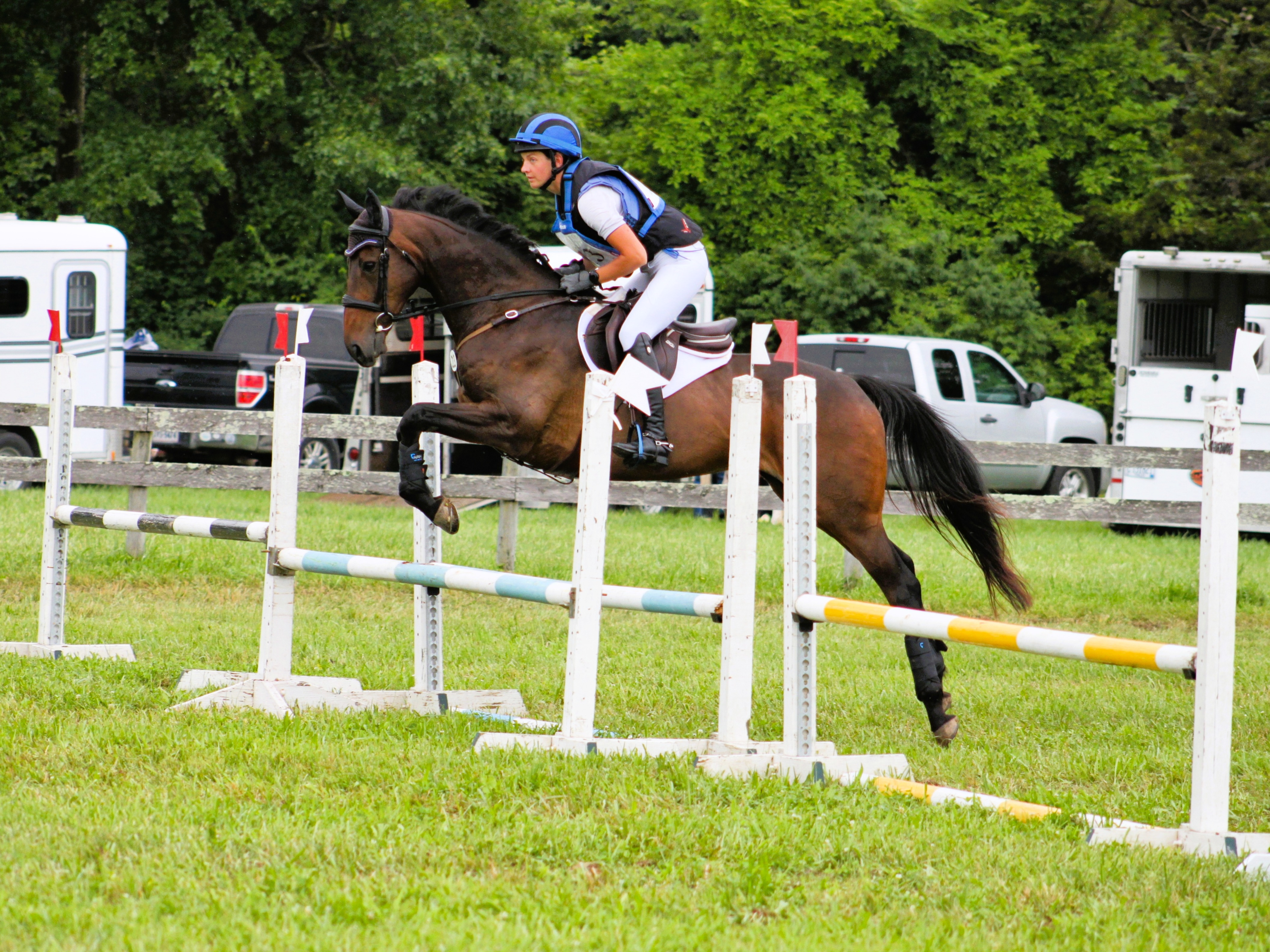“Why Does My OTTB (insert weird quirk here)?” Volume VI
From Lauren:
Why on earth to people even WANT and OTTB if they are so danged quirky? I am here to do my best to answer all of your questions about these curious, outgoing creatures that you have always been too embarrassed, afraid, or freaked out to ask and to hopefully explain the strange compulsion to acquire these creatures. Enjoy!
Spotlight enters a crowded ring like I imagine he entered a racetrack on race day. He looks for the most dominant horse to make sure he can “whoop” it. How many races are decided before the bell goes off? And how does that attitude translate to the show ring? (courtesy of EN reader Adam Barb)
Honestly, I find the most successful race horses to be calm and unaffected by the hustle and bustle of the paddock area and to be absolutely focused heading into the gate and preparing to break. Calvin Borel even spoke of Rachel Alexandra taking several deep, calculated breaths every time she entered the starting gate. I do find that stallions and geldings that were intact past the age of two seem to embrace a more domineering persona and desire to make themselves known when entering a crowded area. To specifically answer your questions, races are not ever decided in the paddock unless the favorite(s) flip(s) over or self-destructs in some other way. In trying to acclimatize OTTB’s to the show ring with this sort of attitude, I usually try to gradually increase the stimuli (number of horses/people) while maintaining my mounts attention and convey to them that they should be far more concerned with what I may be asking them than with what they may be trying to tell the other horses. Good luck!
–
BOTH of my OTTB’s have major aversions to any contact on their shoulders. This occurs almost always when grooming and they are both sensitive to being touched on their shoulders, approximately the same place where you would see a blanket rub. Adding to my confusion, it’s always the right shoulder on one horse and the left shoulder on the other. I’m stumped. (compliments of EN reader Kirsten Collins)
This is a little left field but I would speculate that both of your horses were routinely “shoulder twitched” and that one probably had a left handed groom and the other, a right handed groom. Shoulder twitching is done by grabbing the skin of the shoulder, sort of above the point (near where you would see a blanket rub), between finger tips and base of palm, squeezing firmly, and then twisting about 45 degrees. This is likely mildly uncomfortable to the horse but does release calming endorphins much like lip twitching. However, this common practice will often result in long term increased sensitivity in the shoulder area. Hope this helps!
–
Why does Roscoe seem to have a ridiculous oral fixation?? Everything and anything he can hold in his teeth he will! He does not chew and he does not bite or even nip really, but zippers, crop handles, the nozzle of the hose, my bag sitting in front of his stall. I’ve even seen other OTTBs at the barn do this, too. (compliments of EN reader Rebecca Tanis)
Was Roscoe possible gelded at a late age? I often find that horses gelding after the age of 2 tend to permanently retain the predisposition to put their mouth on EVERYTHING that stallions are so prone to. Testosterone has been linked to activation of the salivary glands and often these permanently slightly higher levels of T in horses gelded later in life continues to stimulate the salivary glands and encourage oral obsessions. It is also worth noting that many trainers at tracks provide jolly balls, empty milk jugs, and other sorts of stall toys that encourage oral fixations. What would Freud think!? Hope this helps!
–
I have very much enjoyed (when I’ve not been horrified) by your columns on the behavior of OTTBs. I don’t mean to be negative or cynical, but after reading more about the OTTB and its training, I must ask: why would anyone want to purchase one over almost any other purpose bred eventing/hunting/showing horse, which has been lovingly, conscientiously and responsibly raised to be a well-adjusted, confident animal? (courtesy of EN reader Judith Davis)
Thank you for your inquiry. This is quite a legitimate question. In my experience, the single most motivating factor in purchasing an OTTB is COST. OTTB’s all across the country can be had for $1000 or less. The really, really fancy/sound/athletic/
I do hope that some of my answers to the questions above have demystified atleast one of your OTTB’s strange quirks and I encourage you to send any further, horse-specific questions to me via email ( [email protected]) for more in-depth and on-point answers. The EN and COTH response has been great and I look forward to make more thought-provoking questions! Go Eventing and go gallop a (former) racehorse!




















